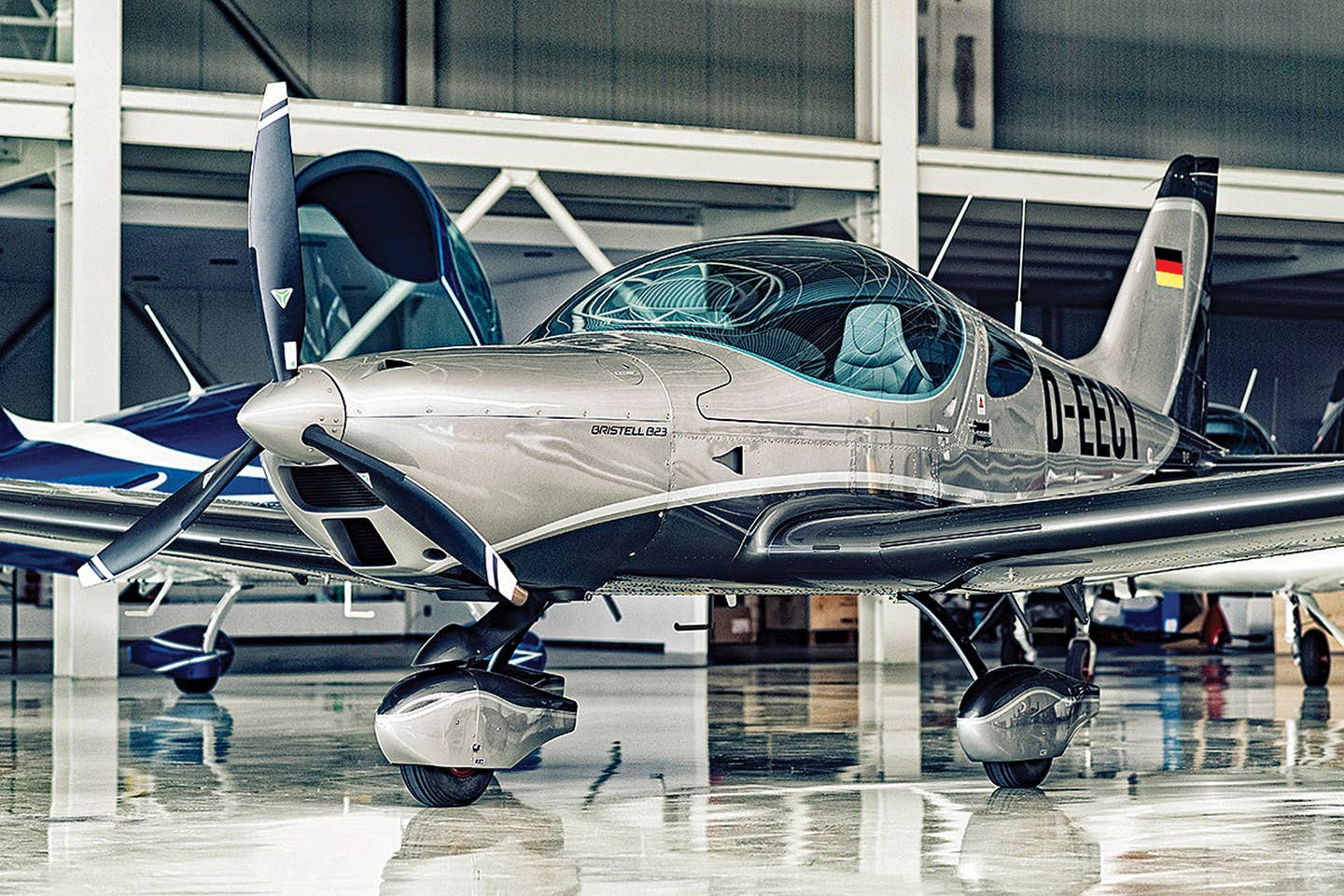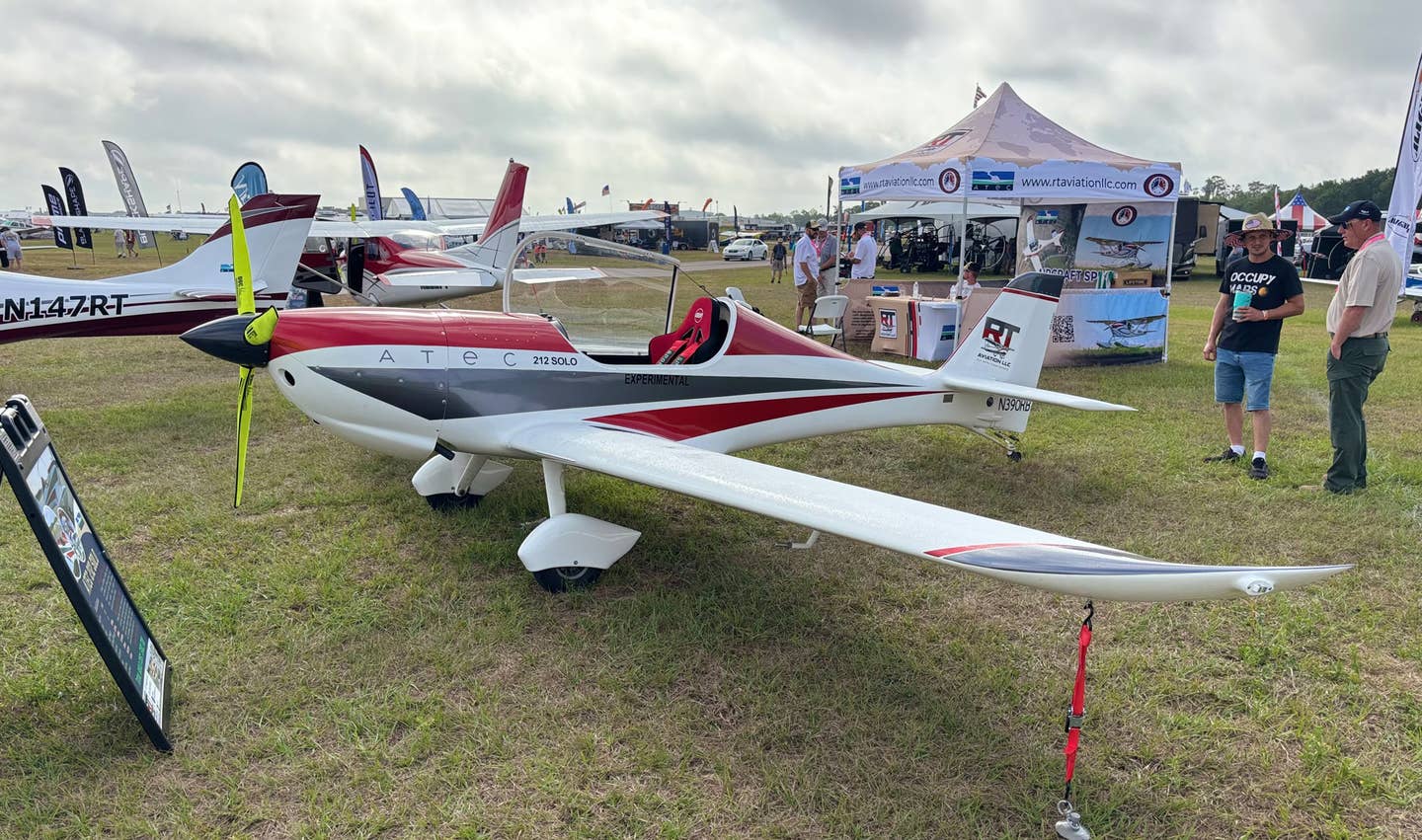Pegaso: Another Light Sport Airplane You Probably Haven’t Seen
Pilots who have attended the Aero Friedrichshafen show in Germany may have spotted Pegaso since it was first exhibited in 2018. Six years later, the model lacks American representation, so…

Promecc Sparviera is the company’s entry-level low wing. It makes a faster version called Freccia that has retractable gear. [image: Promecc]
Pilots who have attended the Aero Friedrichshafen show in Germany may have spotted Pegaso since it was first exhibited in 2018. Six years later, the model lacks American representation, so 'Yankee' pilots generally don’t know this flying machine.
This is Pegaso, a European ultralight that expresses a beautiful style we expect from Italy.
Promecc is better known for its low-wing Sparviero, but Pegaso drew many admiring looks at Aero 2023.
Let’s take a deeper look at an aircraft that can help imagine what we’ll see as Mosaic emerges from FAA rule making in the second quarter of 2025.
Promecc Pegaso
Promecc Aerospace specializes in the design and manufacture of European-style ultralight aircraft predominantly using carbon fiber construction. As is more common in Europe, the company behind Pegaso and Sparviero has a larger operation involved in professional aviation.
The company’s first design, Sparviero, which translates to Sparrowhawk in English, was introduced in the early 2000s. This low-wing design evolved into the faster Freccia Anemo (in English: Fast Arrow) that was introduced in 2011, with a new wing design and aerodynamic refinements that produced a cruise speed of 260 kilometers per hour (140 knots) on 100 horsepower.
European aviation journalist Marino Boric, writing for the ByDanJohnson website stated, “Italian ultralight manufacturer Promecc, with deep roots in manufacturing of commercial aviation subassemblies, brought to Aero Friedrichshafen their Pegaso all-composite, sleek, high-wing aircraft, which derives from the low-wing Freccia.
"Pegaso offers now a new, more ergonomic interior and Marino reported it was “ready for series production.” Its access doors are now front-hinged, “making cabin entry much easier.”
The well-established, fast, retractable-gear, low-wing aircraft Freccia, which successfully passed the static load tests for the 600-kilogram (1,320-pound) certification in Germany, was also showcased together with Promecc’s best-priced fixed-gear low-wing.
In addition to the Rotax 912 and Rotax 914 turbo, the newer Freccia RG has the more powerful Rotax 915iS under the cowling. As Marino heard from company owner Mauro Dono at Aero 2022, the event was “terrific good” with several sold aircraft. It was not reported if Promecc plans to add the 915iS or (more increasingly, designers say) Rotax’s newest 160 horsepower 916iS. To my eyes, the Pegaso could easily accommodate the larger engine in its long, spacious nose cowling.
Promecc informed Marino that it contemplated bringing its aircraft to EAA AirVenture Oshkosh. If they do, I can imagine a warm response to this handsome airplane. Of course, pilots always want to know the price and Marino believed Promecc’s were enticing.
Marino reported that the company intends to offer to the U.S. public the full range of aircraft as factory built but also as “price-competitive” kits.
Kit prices in Europe: Sparviero €40.000 ($43,500 at posting), Pegaso €65.000 ($70,800), and Freccia €69.000 ($75,000). The full configuration of these kits was not known as this article went online. However, that much detail is moot until someone offers to represent the aircraft here because builder support from Italy would be challenging.
What may be most interesting is the potential for those relatively modest kit prices to translate into more affordable factory built prices once American representation is secured.
Here’s how Promecc describes the technical qualities of Pegaso:
- The fuselage is made of carbon fiber and resin certified for aviation industry
- The wing spars and every structural support are completely made of carbon fiber
- Painted with two-component polyurethane varnish, very resistant to UV rays
- The undercarriage is strong and flexible and made of composite materials
- The cockpit is spacious, ergonomic with a sporty finish
- Side-by-side ergonomic seats
- The cockpit is yet comfortable setting and offers excellent visibility
- Plexiglass canopy is available in transparent or with blue tint
How would Pegaso perform if Promecc engineers could fit the potent Rotax 916iS? The 160 horsepower engine has many designers planning installation.
With only 100 horsepower, Pegaso can achieve a cruise speed of 255 kilometers per hour (138 knots). Never exceed speed is 300 kilometers per hour (162 knots). Pegaso’s cantilevered wing construction may not allow MOSAIC weight capability (up to approximately 3,000 pounds is expected) but its sleek lines assure it can slip through the air smoothly.
Qualify Pegaso to ASTM standards with Rotax’s potent 916iS and the Italian producer could have a MOSAIC candidate on its hands. Of course, this still leaves the not-trivial challenge of establishing a distribution beachhead in the world’s largest aviation market. That’s an effort yet to be determined.
As Promecc is a producer of professional aviation components, it may be able to manage efficient manufacturing processes and use its size for economies of scale in the purchase of raw materials. Its work with other large producers may give it connections to create U.S. representation.
This combination of attributes could give the Italian company market entry into the world of MOSAIC—and what a beautiful shape it brings to the fleet.
TECHNICAL SPECIFICATIONS:
all data supplied by the manufacturer
Maximum Takeoff Weight — 1,320 pounds
Maneuvering Speed — 98 knots
Stall Speed — 38 knots
Cruise Speed — 119 knots
Takeoff Roll — 490 feet
Landing Distance — 720 feet
Fuel Capacity — 2 wing tanks holding 14.5 gallons each

Subscribe to Our Newsletter
Get the latest Plane & Pilot Magazine stories delivered directly to your inbox






